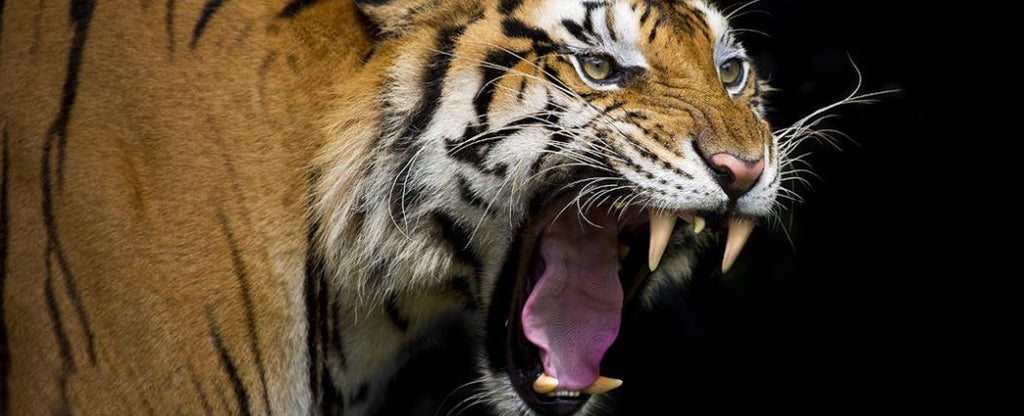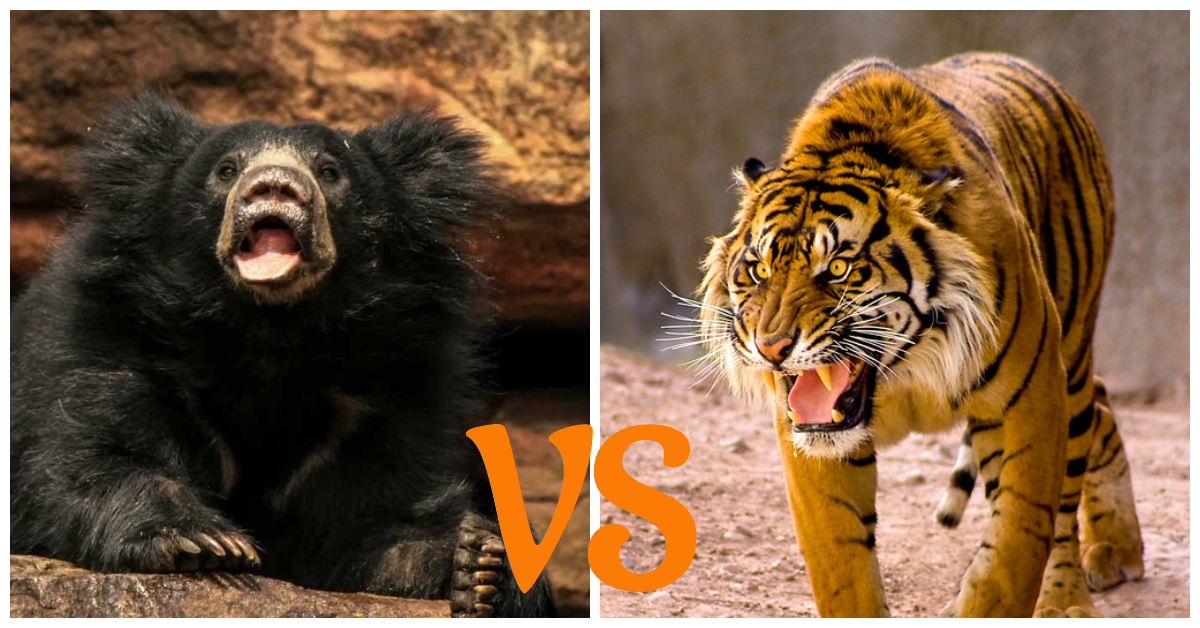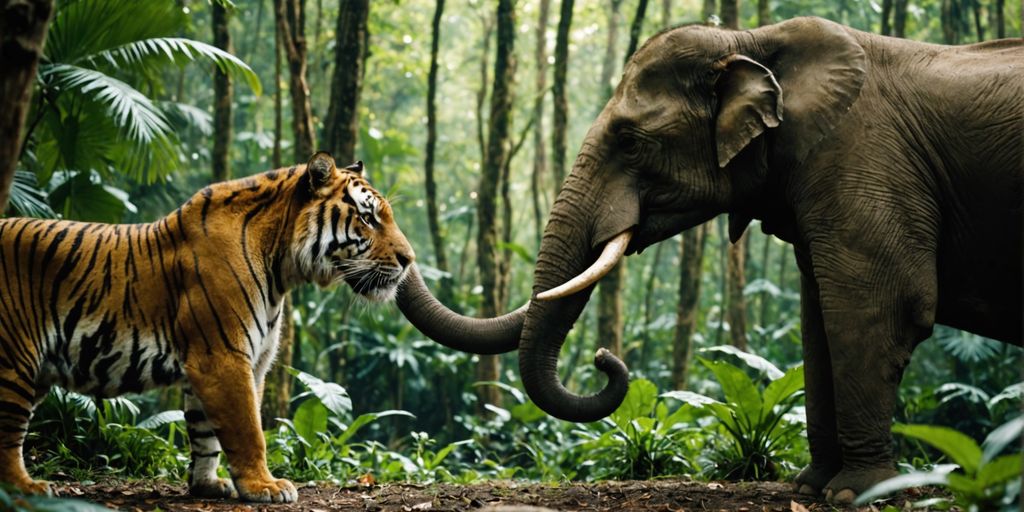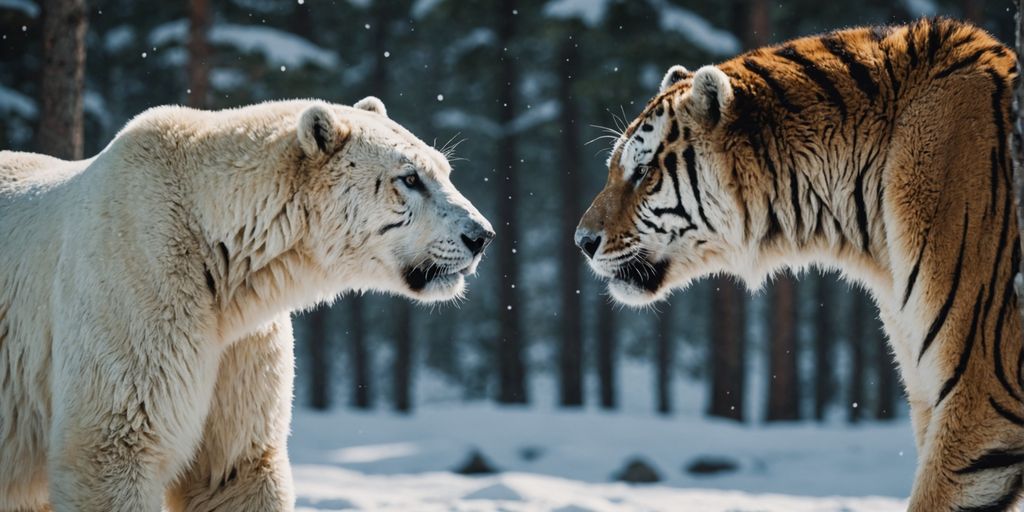Your Cart is Empty
🙏HELP US SAVE TIGERS!🐅 WE DONATE 1% OF OUR SALES TO WILDLIFE ORGANIZATIONS ( WWF ...)
Menu

🙏HELP US SAVE TIGERS!🐅 WE DONATE 1% OF OUR SALES TO WILDLIFE ORGANIZATIONS ( WWF ...)
How Loud can a Tiger Roar?
May 28, 2021 6 min read

The Roar of the Tiger
When one mentions the Tiger, one cannot help but instantly think of its mighty roar. Its roar is one of the most distinctive and characteristic sounds in nature. It's simple when a tiger roars, the whole jungle shakes. Moreover, the big cat is endowed with a wide range of vocalizations, each expressing a particular meaning.
Thus, the Tiger can roar as everyone knows it, but it can also moan, purr, and even meow, like a tiny cat! He uses his vocalizations to express many feelings, sometimes counter-intuitive. Because the Tiger does not have the same expressions as Man, it is important to remain cautious and not to draw too quick interpretations. The striped fawn remains a wild animal, which can easily tear you apart if you approach it lightly and carelessly.
Generally speaking, the sounds made by the big cat are still very badly perceived by the public of zoos and reserves. Specially the meaning behind its roar. This warning of the Tiger may amuse some tourists while indicating imminent danger. But then, how does he do it, and what is its real meaning? This is the question that The Tiger Universe will answer!
The Power of the Tiger's Roar
1) The characteristics of this cry

The frequency, pitch, and volume of the roar are very intimidating to anyone who has never heard it. Surprising as it may seem, this cry can paralyze some animals due to its low frequencies. What is interesting is that much of the vocalizations produced by the Tiger are not even audible to humans. Humans can only hear frequencies ranging from 20 hertz to 20,000 hertz. The Tiger, as well as several animals, can produce sounds at frequencies much lower than that.
Scientists who study bioacoustics call this infrasound. Infrasound can travel farther than so-called "classical" sounds and is the communicative basis of Tigers. The infrasound of this feline averages 18 hertz, but it can produce sounds at lower frequencies when it roars.
Interestingly, it is possible to distinguish between Tigers by the quality of their infrasound. The roar of the enormous felines can be heard over 2 kilometers away. Its powerful vocal cords and its larynx allow it to be heard for several kilometers.
The larynx of the Tiger is quite different from that of the domestic cat. While the larynx of the Puma, for example, is similar to that of a wild cat. The Puma is a mountain cat that does not belong to the Felidae family and cannot produce the famous roar. The sounds it makes are similar to meows, which is not surprising because its larynx is much smaller. As a reminder, the larynx is the place where the sound comes from. Sound is generated in the larynx, and this is where the pitch and volume of the vocalization come from. The exhalation force of the lungs also contributes to the loudness.
Contemplate the power of the Roar with our Tiger Paintings!
The ability of the four big cats to roar comes from an elongated larynx and a specially adapted hyoid apparatus. As previously mentioned, the sound is produced in the larynx when air expelled from the lungs passes through it. As soon as the air passes through the larynx, the cartilage walls vibrate and have sound.
The extra length of the larynx in big cats results in lower frequencies and a raspier roar. This allows them to roar at thresholds of up to 110 decibels, the equivalent of a rock concert!
Felines are divided into two parts: those that roar and those that purr. The big cats such as the Tiger, the Lion, the Leopard, and the Jaguar, can all roar because of the different anatomy of their larynx. Of these four great hunters, the lion has the largest larynx, which allows it to have the mightiest roar!
Like urine, the roar is helpful to the Tiger to communicate over long distances. It uses it after killing a large prey to invite the female to come and mate. The Tiger's roar is thought to be different in many ways from the cry of the other four big cats. We will explain to you right now the scientific reasons for this particularity.
2) The scientific explanation of the roar

The Tiger's roar does not belong to the same roar sequence as the other three felids. Gustave Peters, an expert on Tiger vocalizations, states that technically, Tigers are not among the roaring cats. The Tiger's roar is quite different in some respects from the roar of Lions, Leopards, and Jaguars.
The intimidating roar of a Tiger has the power to paralyze the animal that hears it, and this can even happen with experienced human trainers. It is the only one of the four felids to do this, which is why many bioacoustic studies have been carried out following this discovery. Study the frequency, intensity, and duration of sounds emitted by animals. This science allows us to know a little more about the behavior of these wild animals.
Many experiments have been set up to see how the Tigers react to their infrasound. For example, researchers played a tape of recorded sounds, including audible sounds and infrasound. The study showed that the Tigers seemed to react to these sounds. Sometimes they roared and jumped towards the speakers, and other times they moved away from them.
Unfortunately, these results do not allow us to give a precise meaning to their reactions. Further studies are underway to unravel the mystery around the Tiger's roar!
The reasons for this potent cry
1) The warning

When the presence of an individual disturbs the big cat, it makes it clear in the most impressive way. The warning is one of the most obvious explanations for the Tiger's roar. Indeed, it is not uncommon to see a Tigress roar with all her might to protect her cubs from any external danger. In this kind of situation, the female is much more aggressive and threatening than the male.
This type of reaction is mainly seen on safaris in the middle of the Tiger's land. As you surely know, this fawn is a territorial animal that refuses to live together. Thus, we see many Tigers showing hostility in the presence of tourists and testifying this by a dull and wild roar. Therefore, it is advisable to remain on the lookout if one is in the fact of the Tiger to avoid being chased or attacked by the latter.
2) Intimidation

Whether in the wild or captivity, Tigers remain wild animals that love to show their omnipotence. Intimidation is one of their favorite weapons to scare off or even win in a fierce fight. In this way, Tigers use their roar against large animals such as elephants and bears.
As if its long canines and powerful claws weren't enough, this fearsome predator also has one of the biggest roars in the world. This striped carnivore can also use it against humans, even if it is rare. The most famous cases occur in circuses, where spectators say they have witnessed a hoarse and loud scream from the big tiger. Also, this intimidating ability can help force the most feverish poachers to turn back.
3) Pain and distress

The last reason that can push the Tiger to make its famous roar is undoubtedly the saddest. This solitary hunter is exposed to a lot of dangers during his life. So much so that it is not uncommon for it to get injured and find itself in a critical situation. Like many other endangered species, we notice that the Tiger does not hesitate to ask for help. To do so, it uses its ferocious roar to warn of its distress. During mating, the Tigress may also roar and make other noises to warn the male if he is too rough.
Unfortunately for the Tiger, no one can come to its rescue in its natural habitat unless it is near a village. It seems that this roar is somewhat a cry of agony in the wilderness. On the other hand, it takes on a whole new dimension for Tigers in captivity. It is a sign of discomfort and unpleasant sensations in the Tiger, which instinctively warns its caretakers of its problem. This primitive communication seems to be common to many mammals, explain the managers of many animal parks.
In summary

The famous roar of the Tiger is not just another howl. It testifies to the omnipotence of wildlife and can warn of a tiger attack. The power of this growl comes from the hyoid bone and the elongated larynx of this large carnivore. It uses its cry in different situations, like hunting, for example. Its strength can be observed on other tourist sites or even on safari because the feline loves its tranquility and is very hostile in the presence of humans.
The roar is also a symbol of revolt used by the Tiger against poachers. Indeed, this species is still threatened with extinction. The hunting of tigers still takes place in many countries, so that the striped fawn is one of the most endangered animals in the animal world. Therefore, it is essential to behave responsibly towards it if you want to preserve it. Only in this way can we continue to listen to the mighty roar of the Tiger!
Come check out our Tiger T-shirts featuring the fiercest roar. ⤵️
Also in Tiger Blog

Sloth Bear vs Tiger: Who Would Win?
July 13, 2024 7 min read
Explore the thrilling showdown between a sloth bear and a tiger, analyzing their strengths, behaviors, and survival tactics.
Read More
Tiger vs Elephant: Who Reigns Supreme in the Animal Kingdom?
July 13, 2024 7 min read
Explore why elephants usually triumph over tigers in the wild, highlighting their size, strength, and defensive prowess.
Read More
Epic Battle: Polar Bear vs Tiger, who win?
July 11, 2024 8 min read
Epic showdown: Polar Bear vs Tiger. Discover who would win in this thrilling battle of nature's fiercest predators.
Read More
